Can you locate St. John, New Brunswick, on a map of Canada? It’s alright if you can’t immediately pinpoint it; many are unfamiliar with this gem in Atlantic Canada. But once you discover St. John, you’ll understand why it’s a destination worth remembering. Founded in 1785, St. John holds the distinction of being the oldest incorporated city in Canada, nestled on the Bay of Fundy, a body of water renowned for its breathtaking beauty and dramatic tides. This city seamlessly blends rich history with natural wonders, offering a unique experience for every traveler.
A City Steeped in History: Exploring St. John’s Heritage
St. John’s historical significance is palpable throughout the city. As Canada’s first incorporated city, its past is interwoven with the nation’s maritime roots. Shipbuilding was the lifeblood of early St. John, shaping its growth and identity. Interestingly, in St. John, the term “downtown” refers to the waterfront, a testament to the city’s maritime heritage, while “uptown” is considered the central hub. The city’s hilly terrain is also noteworthy; as you explore, you’ll ascend to discover shops, restaurants, homes, and businesses.
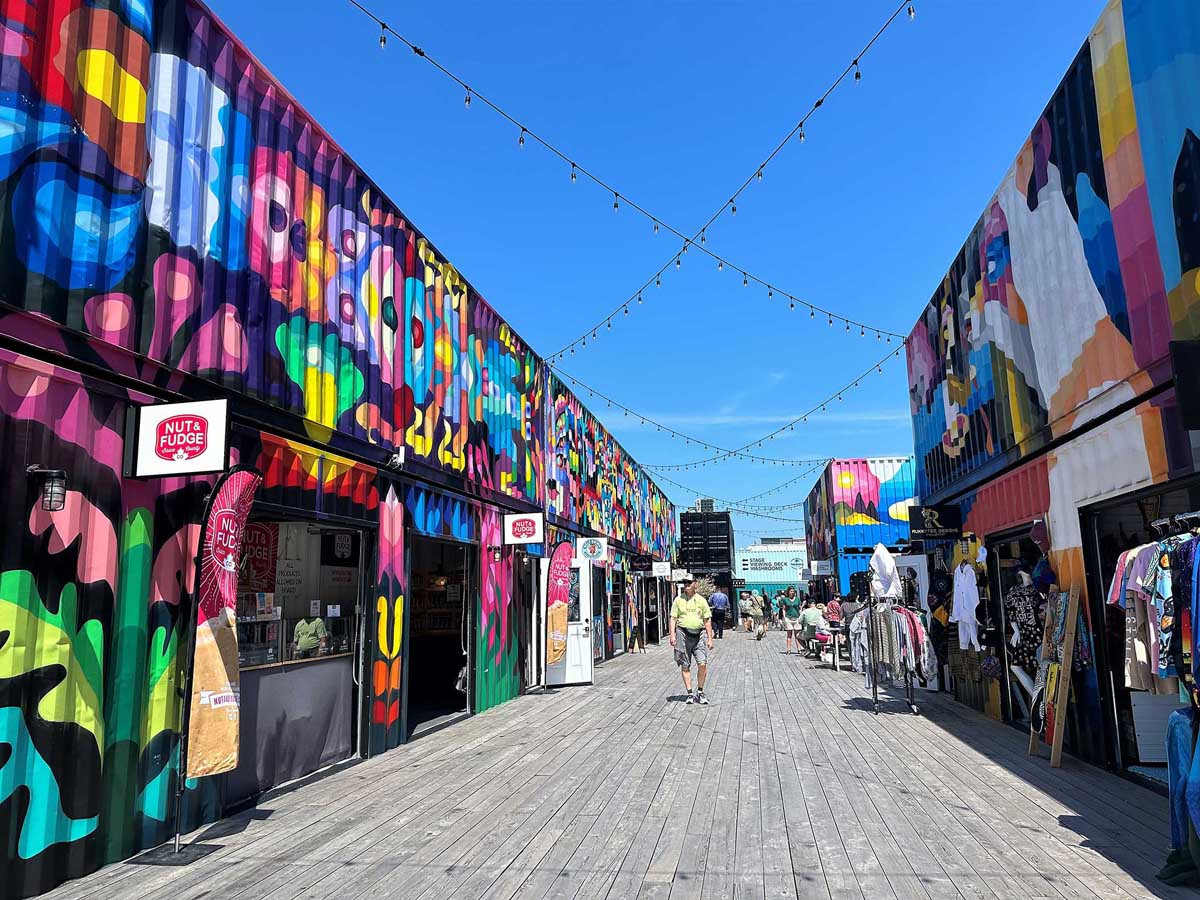 Colorful murals adorn shipping containers in Area 506, St. John, New Brunswick
Colorful murals adorn shipping containers in Area 506, St. John, New Brunswick
Area 506 Waterfront Container Village: A Modern Marvel with a Nod to the Past
One of St. John’s most innovative attractions is Area 506 Waterfront Container Village. This unique space reimagines repurposed shipping containers into a vibrant hub of shops and experiences right on the waterfront. Echoing St. John’s port city history, over fifty refurbished containers house diverse storefronts. Area 506 isn’t just about shopping; it’s an entertainment destination. An open stage hosts live performances, a turf area invites picnics, and a tiered patio provides excellent views of the stage and harbor.
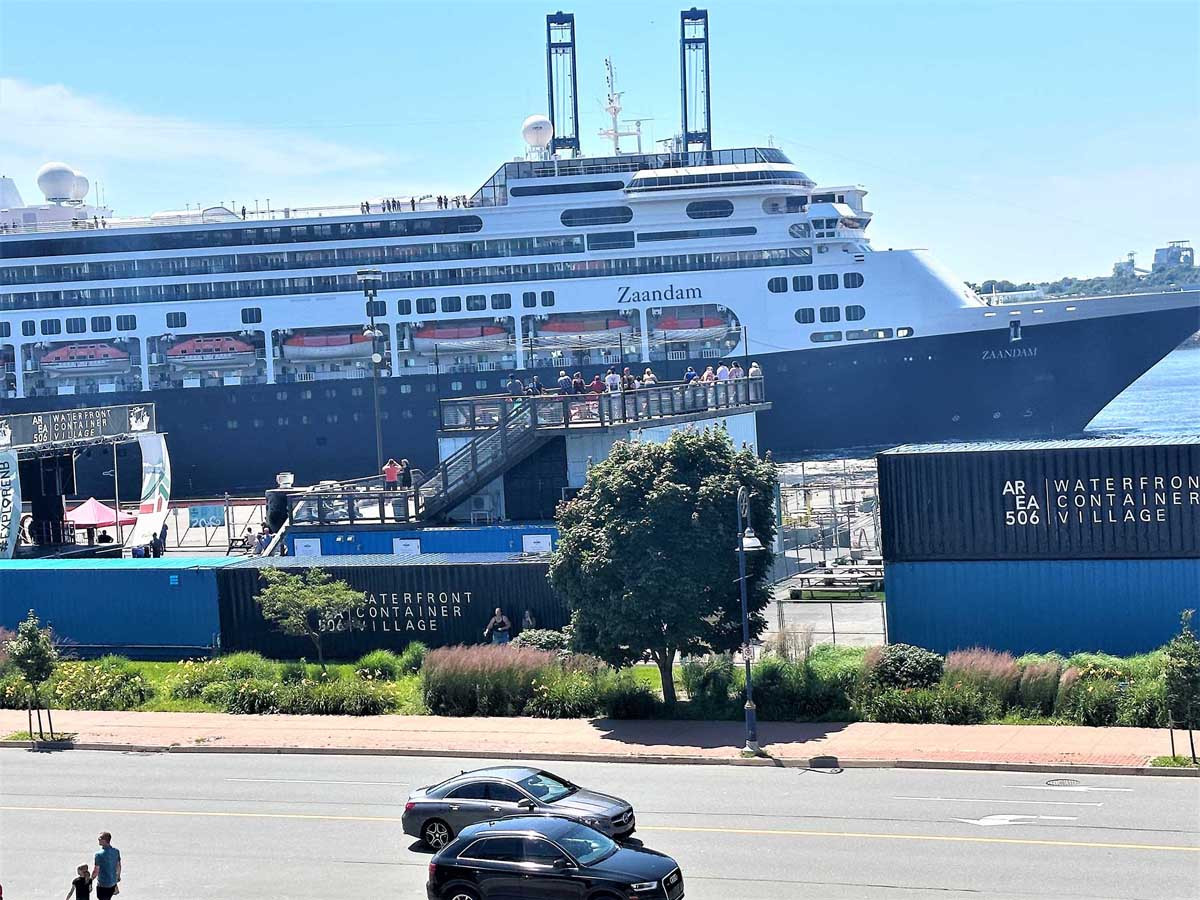 Cruise ship docked in the port of Saint John, New Brunswick, Canada
Cruise ship docked in the port of Saint John, New Brunswick, Canada
Area 506 is particularly appealing to cruise ship visitors, and St. John welcomes between 70 and 80 cruise ships annually. During visits, cruise passengers can easily explore this distinctive area, immersing themselves in the city’s atmosphere. Adding to the visual appeal, many containers are adorned with vibrant murals by various artists, creating an open-air art gallery experience as you wander through.
Architectural Gems: Rebirth After the Great Fire
St. John showcases remarkable architectural diversity, a legacy partly born from adversity. In 1877, a devastating fire swept through uptown St. John, causing widespread destruction. Demonstrating incredible resilience, the city was rebuilt, largely in brick, resulting in a stunning cityscape. Today, St. John boasts an eclectic mix of architectural styles spanning over a century. You’ll find Georgian architecture, characterized by its balanced facades and rectangular forms, alongside numerous examples of Greek and Gothic Revival styles. Greek Revival echoes classical temples, while Gothic Revival offers a more ornate aesthetic. Other prevalent styles include Italianate, Mansard, and Queen Anne Revival, all contributing to the city’s fascinating architectural tapestry. Key public spaces like King’s Square, Queen Square, and Market Square, along with the historic Old Loyalist Burial Ground, are interspersed among these buildings. Just a short walk from the modern Area 506, visitors can discover boutique shops, art galleries, and a diverse array of restaurants and bars.
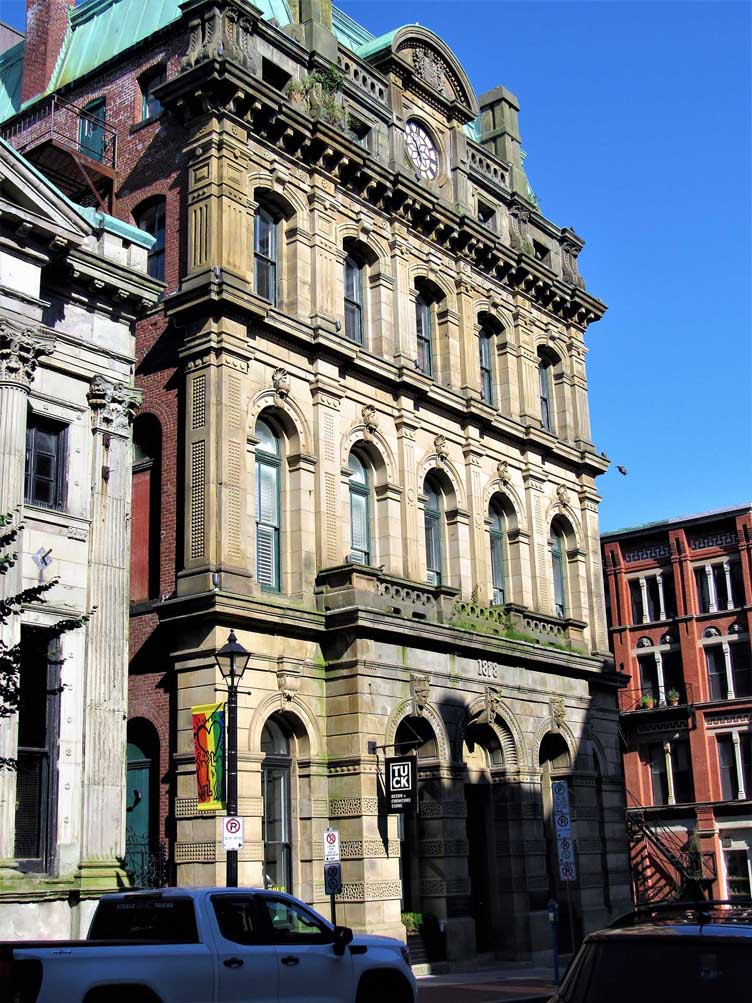 Historic architecture in Saint John, New Brunswick, featuring the old post office building
Historic architecture in Saint John, New Brunswick, featuring the old post office building
 Chubb's Building, a historic building showcasing the uphill construction style in Saint John, New Brunswick
Chubb's Building, a historic building showcasing the uphill construction style in Saint John, New Brunswick
 Historical 1879 Building in Saint John, New Brunswick, exhibiting varied architecture with the construction year displayed
Historical 1879 Building in Saint John, New Brunswick, exhibiting varied architecture with the construction year displayed
The city is also looking towards the future. The waterfront downtown area is undergoing significant redevelopment over the next decade. Plans include a continuous boardwalk, new hotels, condos, apartments, retail and business spaces, an outdoor skating rink, entertainment venues, and expanded green spaces – all with stunning views of the Bay of Fundy.
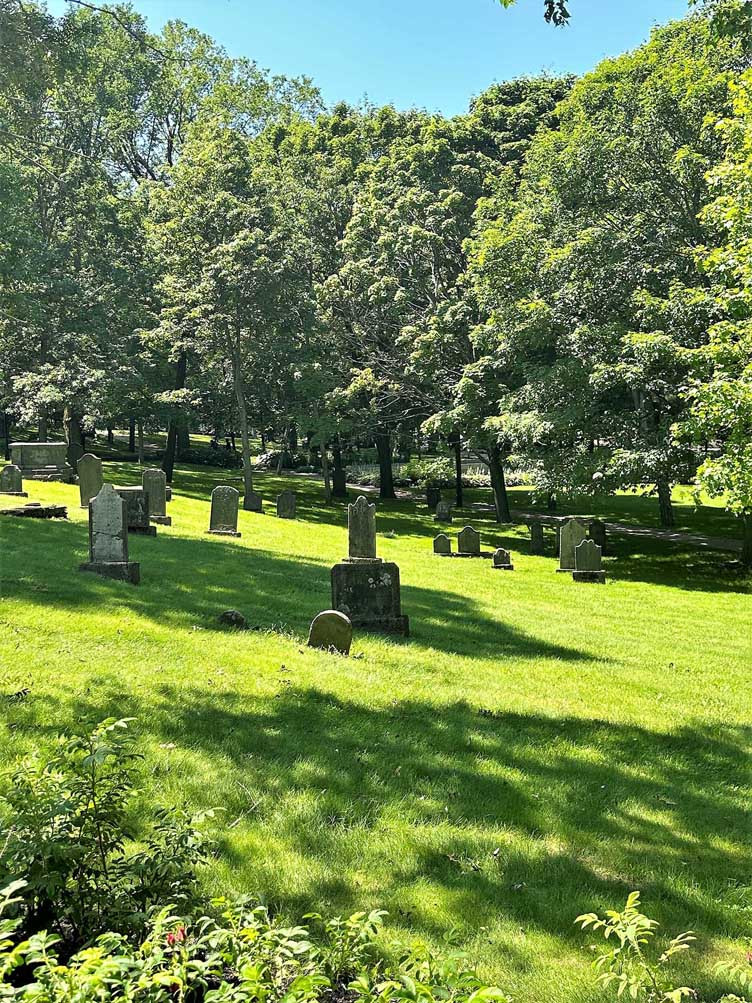 Old Loyalist Burial Ground, a historic park in Saint John, New Brunswick, commemorating the city's history
Old Loyalist Burial Ground, a historic park in Saint John, New Brunswick, commemorating the city's history
Nature and Geology: Unveiling Stonehammer Geopark
Did you know that St. John is located within a UNESCO Global Geopark? Stonehammer Geopark encompasses the entire city, offering a journey through over a billion years of geological history. A Geopark designation highlights areas with exceptional geological heritage, committed to conservation, education, and sustainable tourism. Stonehammer proudly holds this UNESCO status, demonstrating its commitment to these principles.
 Kayaking activity at Dominion Park, Saint John, near a site with billion-year-old fossils
Kayaking activity at Dominion Park, Saint John, near a site with billion-year-old fossils
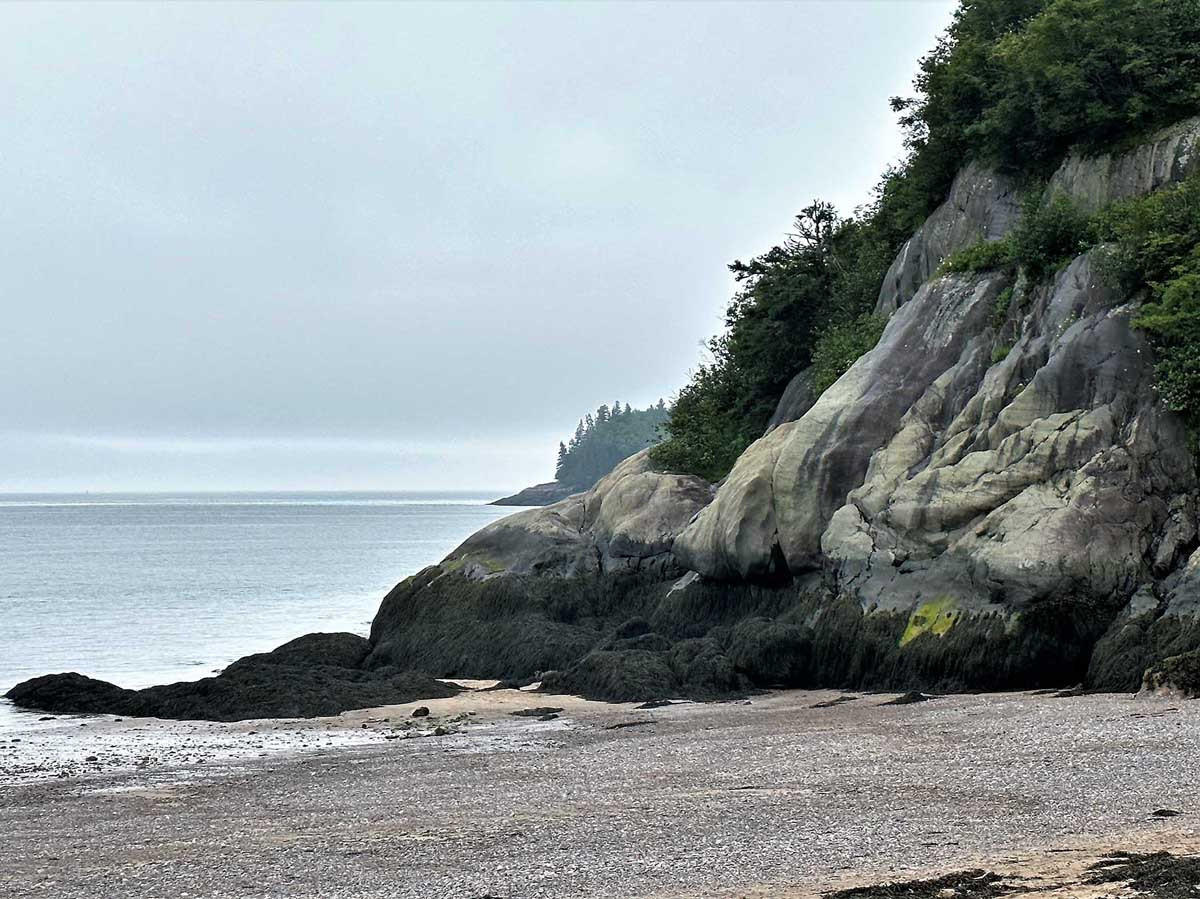 Bay of Fundy tide lines at Irving Nature Park within Stonehammer Geopark, showcasing different tide levels
Bay of Fundy tide lines at Irving Nature Park within Stonehammer Geopark, showcasing different tide levels
The geological narrative of St. John stretches back to Pangea, illustrating continental drift and tectonic plate movements. Within Stonehammer, you can witness Stromatolite fossils dating back approximately one billion years. The Caledonia Fault, a major geological feature, divides distinct terrains within the geopark. A highlight is the Reversing Falls Rapids, a remarkable tidal phenomenon where the powerful Bay of Fundy tides force the St. John River (Wolastoq River in the First Nations language) to reverse its flow. This creates Class 5 whitewater rapids, whirlpools, and submerged ledges – a truly captivating spectacle. The Reversing Falls are a direct result of fault lines, tectonic plate collisions and separations, and glacial activity, aligning with the oral histories of the Indigenous peoples of the region.
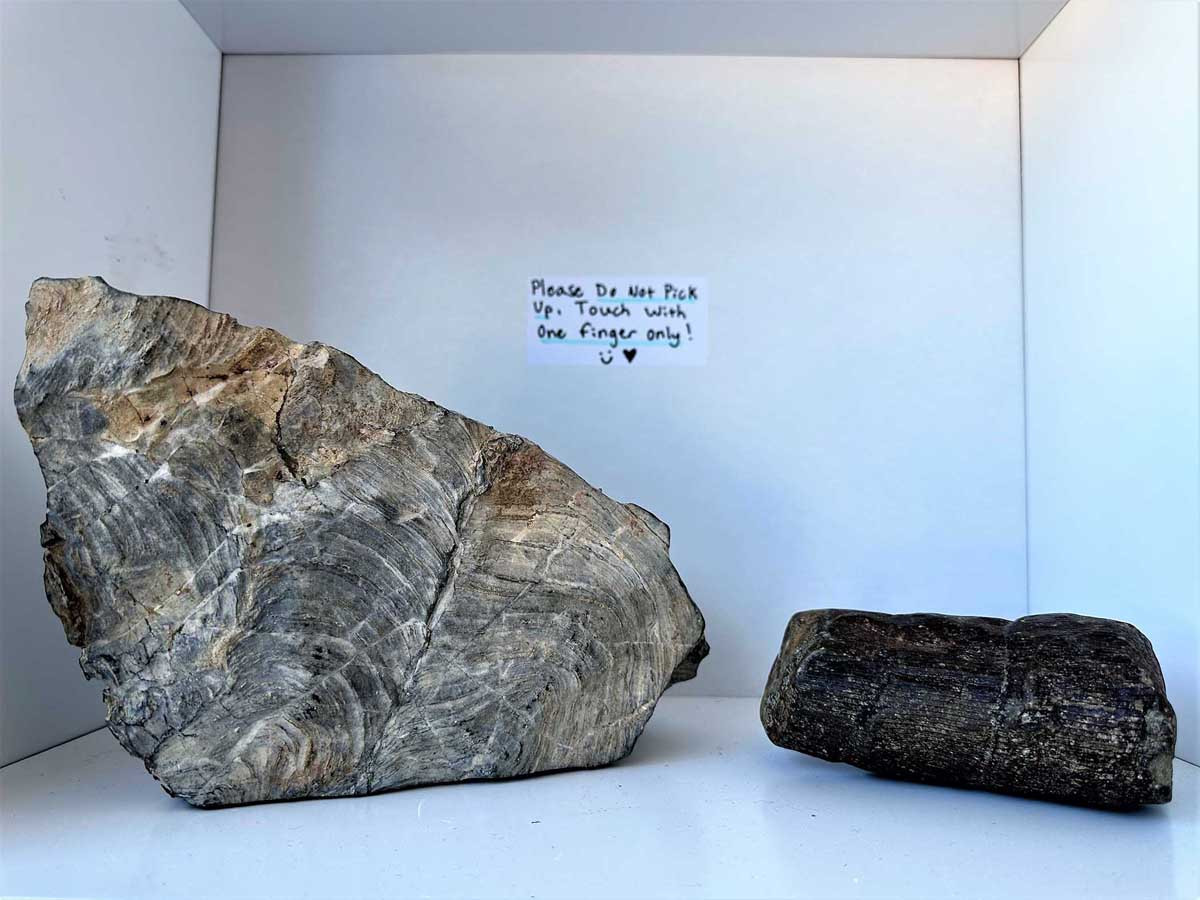 Fossil samples discovered within Stonehammer Geopark, Saint John, New Brunswick
Fossil samples discovered within Stonehammer Geopark, Saint John, New Brunswick
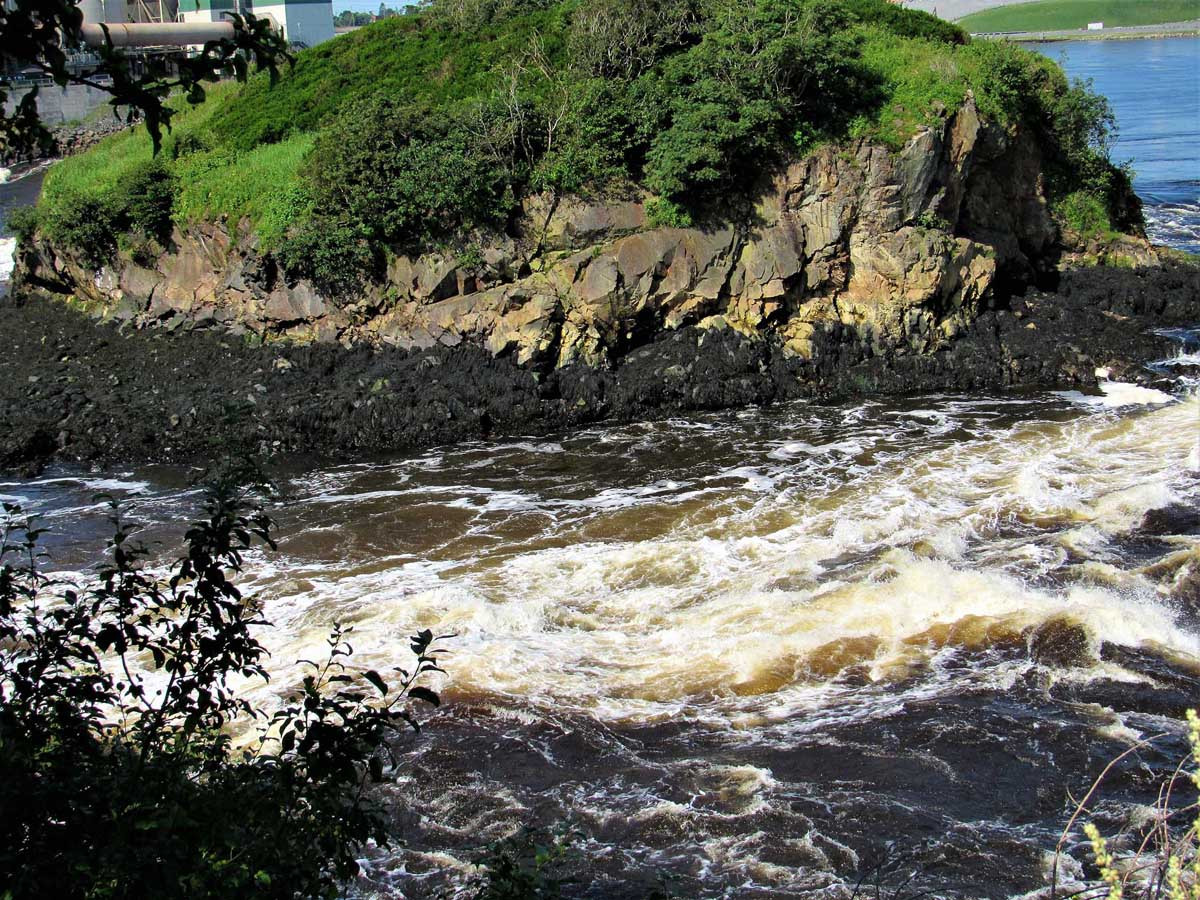 Rapids near an island in the St. John River (Wolastoq River) at low tide, Saint John, New Brunswick
Rapids near an island in the St. John River (Wolastoq River) at low tide, Saint John, New Brunswick
 Collision point of three rock types from different continents in Stonehammer Geopark, Saint John
Collision point of three rock types from different continents in Stonehammer Geopark, Saint John
 Saint John High School, an example of city architecture and Canada's oldest continuously publicly funded high school
Saint John High School, an example of city architecture and Canada's oldest continuously publicly funded high school
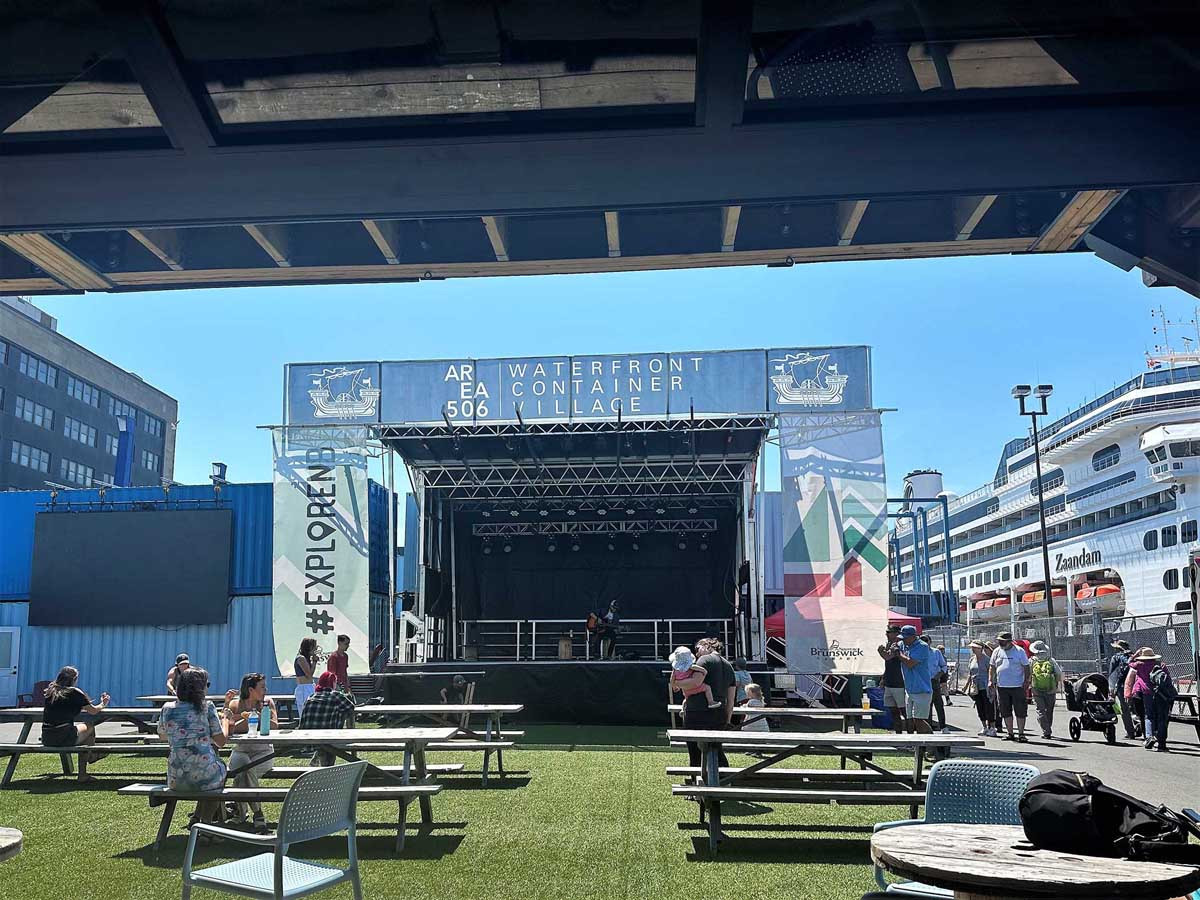 Entertainment area within Area 506, Saint John, for bands and performances
Entertainment area within Area 506, Saint John, for bands and performances
Conclusion
St. John, New Brunswick, offers a compelling blend of historical depth and natural splendor. From its vibrant waterfront and unique Area 506 to its rich architectural heritage and the geological wonders of Stonehammer Geopark, St. John is a city of discovery. The warm and welcoming locals further enhance the experience, creating a destination that honors its past while embracing progress. St. John invites you to explore its captivating story and experience the beauty of the Bay of Fundy firsthand.


